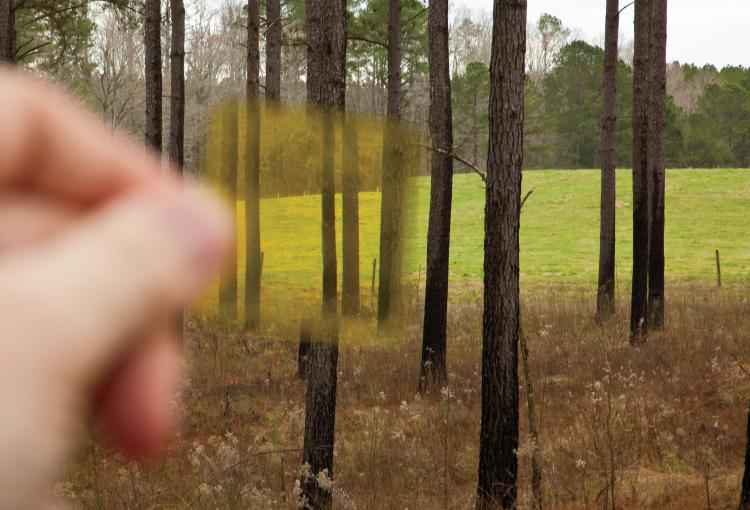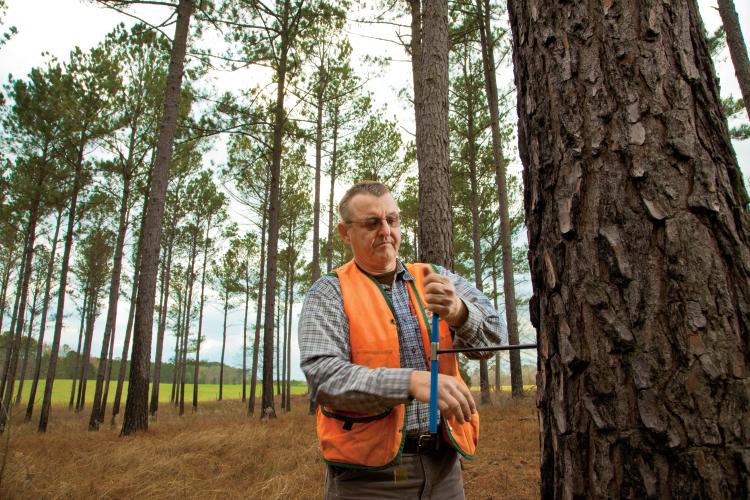Home > South Carolina > South Carolina Crops & Livestock > Strong Roots in South Carolina Forestry Industry
Strong Roots in South Carolina Forestry Industry

South Carolina may be known for its beaches, but the state’s trees are the foundation of its economy.
Forests cover two-thirds of South Carolina, and the forest industry has a more than $17 billion annual impact on the state’s economy and creates approximately 90,000 jobs. The annual delivered cash value of timber in the state exceeds $780 million.
“We’re proud of our forestry industry,” says Cam Crawford, president of the South Carolina Forestry Association. “It’s a huge, long-term industry in our state.”
And the Port of Charleston is an important asset to the forestry industry. At an estimated value of $1.3 billion annually, forest products are the number one export moved through the port.
“We live in a global society, and our industry has taken advantage of that,” Crawford says. “Our products are shipped to Turkey, the United Kingdom, the Netherlands, Taiwan, Germany, South Korea and elsewhere throughout the world, and we are seeing those opportunities and markets continue to expand.”
The port itself is expanding, deepening its harbor to prepare for the larger vessels traveling through the Panama Canal beginning in 2015 and constructing a new facility at the former Navy base.
South Carolina’s top forestry products are paper and paperboard-related products, wood pulp and wood products.

“Pulp and paper are the real strengths in South Carolina,” Crawford says. “Demand for South Carolina wood pulp remained strong throughout the recession we just experienced, and we expect that demand to continue to increase.”
That’s good news for Wallace Wood, the state’s 2011 Tree Farmer of the Year. Wood primarily produces southern yellow pine and hardwood timber on his 167 acres in Parksville. A former agriculture extension agent with Clemson University’s Cooperative Extension Service, Wood spent his career working with landowners in forestry and natural resource education.
As a tree farmer, Wood manages the planting of the seedlings, controlled burns, thinning, the control of invasive species and undesirable hardwoods – all while focusing on water quality and wildlife habitat.
It’s a long-term process that starts with planting the seedlings and ends some 50 years later with the final harvest. In the early years, Wood works to protect the trees from fire, insects and invasive species. He maintains fire lines around the young plantations. The first thinning occurs between 12 and 15 years of age. “We take out some of the trees to allow room for the others to grow,” he says.
That first thinning produces pulpwood, and then the prescribed burning program gets under way.

“We burn tracts every two to three years to keep the undesirable trees under control,” Wood says. “The burning also improves the habitat for wildlife by increasing the grasses and legumes on the forest floor.”
The second and third thinnings, from five to seven years apart, again produce pulpwood and a class of saw timber called chip-and-saw. There may be a fourth thinning or a complete harvest, depending upon the size of the trees. At that point, the final products are saw timber and/or utility poles, and the harvested wood literally ships in all directions.
“We also maintain our land for recreation and enjoyment,” Wood says. “We hunt and fish, and the timber operation fits in nicely with that. We enjoy hiking and riding horses and other activities on the property.”
Wood’s farm has an ecologically important stream, Stevens Creek, the 15th most bio-diverse stream in the state. Flowing into the Savannah River, Stevens Creek is home to a number of rare and endangered species, both plants and animals.
“We want to protect that,” Wood says. “We placed a conservation easement on part of our property that borders the creek. That section will always stay in forest or ag production and can’t be developed.”



